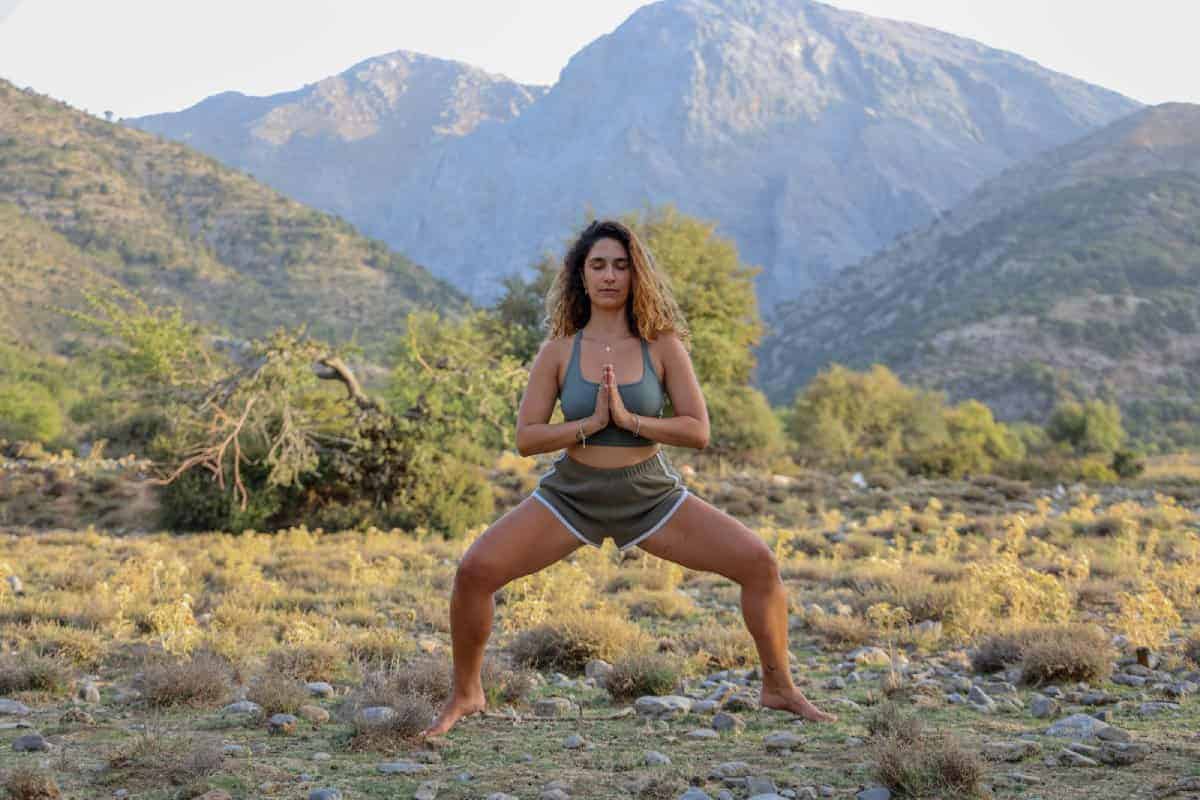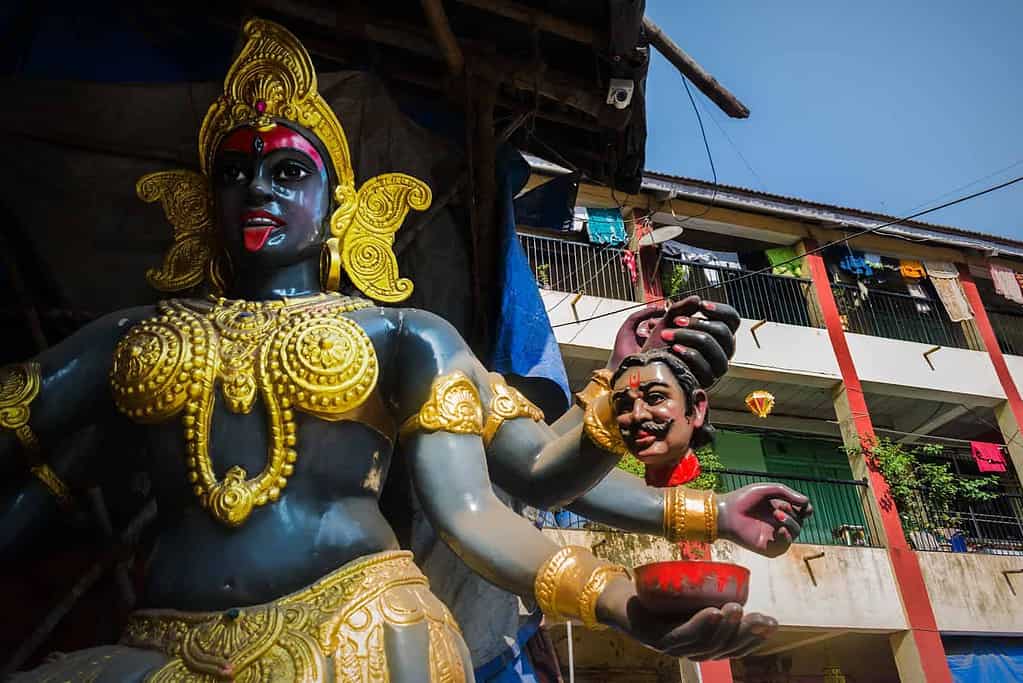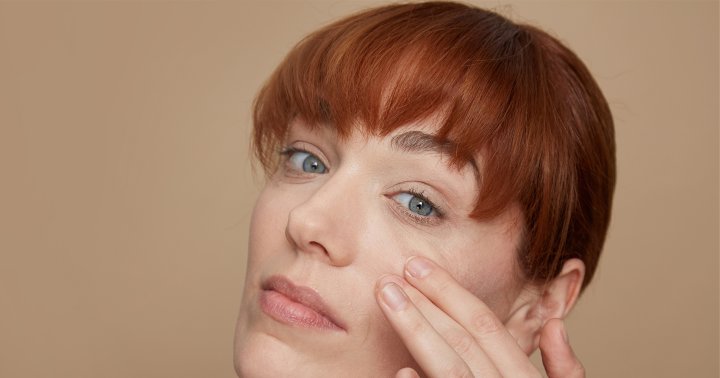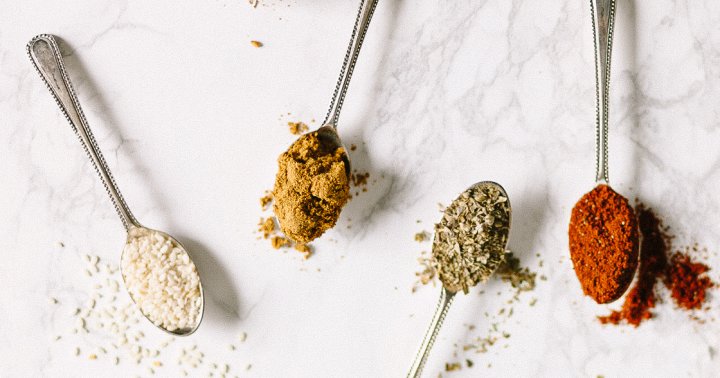How To Do Goddess Pose In Yoga – Proper Form, Variations, and Common Mistakes
The post How To Do Goddess Pose In Yoga – Proper Form, Variations, and Common Mistakes appeared first on The Yoga Nomads.

Looking for a fiery “power pose” to boost your energy, kickstart your day, and fill you with confidence and courage?
If so, Goddess is the perfect pose for you.
The Goddess pose (Utkata Konasana) is associated with the victorious Hindu Goddess Kali, who represents the power and strength of feminine energy. Thus, it is one of the best yoga poses for awakening the inner Goddess within yourself (along with enjoying an excellent hip opener).
Read on to learn the benefits, proper form, and helpful tips for mastering Utkata Konasana. I also share my favorite Goddess pose variations and modifications to make the asana work for your unique body.
Goddess Pose Benefits

Goddess, also called Fierce Angle Pose or Victory Squat, is an incredibly powerful pose for the entire lower body. It also requires the active engagement of the abs while stretching and strengthening different muscle groups in the upper body.
Here are some of the top benefits of the Goddess pose.
Strengthens the legs, hips, and core Tones the pelvic floor muscles and helps to prepare for pregnancy Stretches the hip flexors and inner thighs Improves balance Opens the chest and stimulates the respiratory and cardiovascular system Stimulates the root, sacral, solar plexus, and heart chakras Releases emotional tension Helps you awaken your inner Goddess and connect to powerful feminine energyStep-by-Step Instructions

To enter Goddess pose, start from a standing position in the center of your mat, facing the side.
Bring your feet to a wide stance (about 3 feet apart). Turn the feet out 45 degrees with the toes pointing to the corners of the mat and heels in. Open your arms to the side, bend the elbows to 90 degrees, and face the palms forward. Elbows should be in line with shoulder blades and wrists directly over the elbows. On an exhale, bend your knees and sink your hips into a wide squat pose. Bring the knees directly over the ankles and the thighs parallel to the floor (or as close to parallel as possible). Press both feet firmly into the ground to activate the thighs. Draw your belly button in to engage the core muscles. Draw your shoulder blades back and down, away from your ears. Open and lift your chest as you tuck your tailbone to ensure a neutral spine. Keep your chin parallel to the ground and fix your gaze on one spot in front of you. Hold for 3 to 5 breaths as you enjoy the deep opening of the hips and chest.Check out this helpful video for a visual demonstration of how to do the Goddess pose:
Tips For Mastering Goddess Pose
While Utkata Konasana is not a particularly tricky asana, a few simple tips will help make the pose more effective and enjoyable.
Come In And Out Slowly
Sink your hips slowly and come down gradually, noticing how it feels each time you move a little lower. When holding the pose, avoid bouncing the hips up and down, and when coming out, rise slowly.
Spread The Weight Evenly
When holding Goddess pose, actively press into the four corners of your feet. This will help engage the leg muscles, find more stability, and prevent uneven weight distribution.
Don’t Forget To Breathe
Strenuous standing poses like this can cause us to unknowingly quicken or hold our breath. However, the deeper and slower we breathe in Goddess pose, the more comfortable it will become, and thus, the longer we can hold it.
Common Mistakes

Here are some things to watch out for when practicing Goddess pose.
Mistake 1: Knees Caving Inwards
To protect the knee joints from injury, bring them to a 90-degree angle over the ankles (for a gentler stretch) or line up with your toes (for a deeper sensation). Another reason the knees may roll in is that the toes are not turned out enough. The knees should move toward the toes, so if your knees are caving inwards, turn the toes out a bit more.
Mistake 2: Leaning Forwards Or Arching Your Back
The spine should remain straight and upright in this position. If you find you lean forwards when you sink your hips, engage your core and avoid squatting so deep. It is more important to keep your spine long than squat super low. You can measure this alignment by checking that your shoulders remain stacked over your hips.
Goddess Pose Variations
There are many different ways to practice the fierce angle pose. Each of the following variations adds additional benefits or deepens the existing ones.
Anjali mudra
One of the most common variations of the Goddess pose is bringing the hands to a prayer position at the heart center. This is known as Anjali mudra, which represents returning to your heart.
This variation offers a softer interpretation of this pose and Goddess Kali. It can also serve as a modification for those with pain or injury in the shoulder joint.
Goddess Pose On Tip Toes

If you want to make this posture even fierier, add an extra challenge by coming onto your tip toes. Once you have reached the squat position, lift your heels, shifting your weight to the balls of the feet and toes.
This variation will strengthen the leg muscles further, work the foot muscles, such as the inner arches, and test your balance.
Revolved Goddess Pose
Revolved Goddess is a twisted variation that helps “wring” out toxins and stimulate the digestive organs.
From the squat position, places your hands on your thighs. Keeping the tailbone tucked, twist your torso to the right, allowing your chest and head to follow. Pull your right shoulder back, and your left shoulder comes forward. Hold for a few breaths, then repeat on the other side.
Goddess Pose With A Side Stretch

This variation adds an opening to the side body and stretches the rib cage. By adding the side stretch, the leg and core muscles must work more to maintain stability.
Bring your right forearm to your right thigh. The forearm should rest gently; avoid leaning your upper body weight onto that thigh. Then, on an inhale, sweep your left arm up and over, stretching towards the right side.
When you feel a stretching sensation in the left side of the body, hold here for 3 to 5 deep breaths, directing the breath to the left rib cage. Release, then repeat the side stretch on the other side.
Dynamic Movements
You can also dynamically practice Goddess pose. Start in the standard position with the knees bent and arms in cactus arms. As you inhale, straighten the legs and extend the arms overhead, bringing the palms to touch. As you exhale, re-bend the knees and the elbows, returning to the original position. Alternate between these two movements 3 to 5 times.
Modifications To Make The Pose More Accessible
The Goddess pose can be very challenging for beginners, those with tight hips, and yogis lacking lower body strength. So, if it feels too much, modify the pose in one of the following ways:
Keep your hands on your hips or bring them to the wall or a chair to help you find balance and stability. Don’t squat so low. If your legs shake, come up slightly until it feels more comfortable. Place a folded yoga blanket under each heel. Do the chair variation. Sit on a chair with your buttocks close to the chair’s edge. Open your knees wide with the feet at a 45-degree angle. This modification gives the same excellent hip opener but takes the weight off your legs.Reclined Goddess Pose

The reclined Goddess pose variation makes this usually energizing posture cooling and restorative. For this modification, lay on your back and bring the soles of the feet together with the knees out wide, like in the Bound Angle pose.
Next, let the knees drop down to the ground and bring your arms into the Cactus position, resting the elbows on the floor with the palms facing up.
Is Goddess Pose Suitable For Pregnant Women?
Goddess pose is a popular posture in prenatal yoga as it tones and strengthens the pelvic floor muscles and opens the hips. This creates more space in the pelvic area, potentially making pregnancy more comfortable.
It is safe to practice the standing version during the second and third trimesters, but if it feels too much, you can practice the reclined variation instead. Place yoga blocks under the knees for support when practicing reclined Goddess pose.
Preparatory poses

Goddess pose (Utkata Konasana) should be practiced during or after the standing sequences when the body is already warm. As various muscles are stretched and strengthened in this pose, not warming up could cause pain or muscle strains.
Here are the top preparatory poses:
Bound Angle Pose Chair Pose Warrior 2 Extended Side Angle Pose Triangle Pose Malasana Five-Pointed Star PoseCounter poses
As a deep hip opener, Goddess Pose can help you prepare for more advanced hip stretches like Skandasana.
Other typical follow-up poses, which help to stretch out the muscles just worked and cool down the body, are:
Wide-Legged Forward Fold Standing forward bend (Paschimothanasana) Downward Facing Dog Child’s PoseTeaching Goddess Pose – Help Your Students With These Cues
If you’re a yoga teacher wanting to add this empowering asana to your classes, here are a few tips on how to cue Goddess Pose.
Look down at your feet. The ankles should be wider than hip-distance. Ensure your knees align with the toes, and press both feet firmly into the ground. Tuck your tailbone, engage your core and lift your chest to straighten your spine. Send your breath to your inner hips or groin. If you feel tension, envision your Prana (life force) flowing to this region to release all stagnated and blocked energy. As hip openers are associated with emotions, observe if any feelings arise when or after practicing Goddess pose.You can also teach two rounds of Goddess to pose with a wide-legged forward fold in between. You can switch it up for the second round by getting your students to practice a different variation, such as Revolved Goddess.
Final Thoughts On Goddess Pose
Goddess pose (Utkata Konasana) boasts numerous physical, emotional, and energetic benefits. From boosting self-confidence to regulating emotions to helping prepare for childbirth, Goddess is an asana everyone should include in their regular practice.

 JimMin
JimMin 































